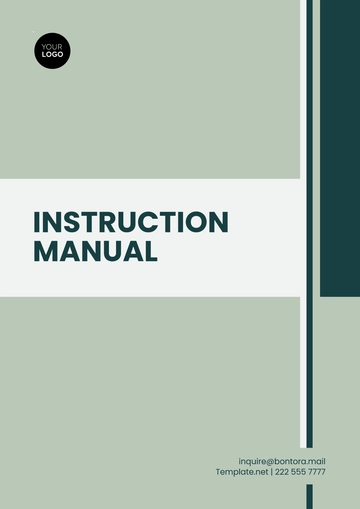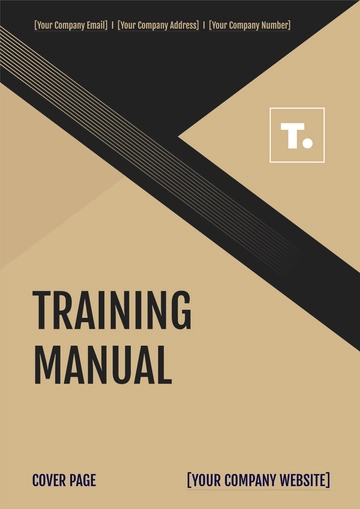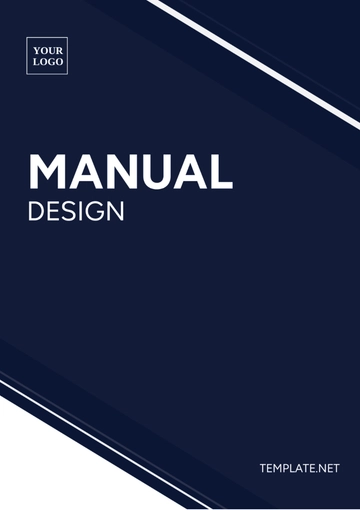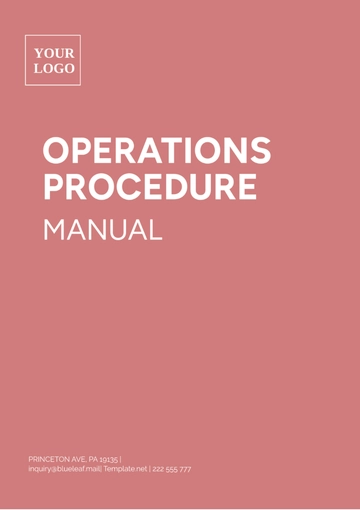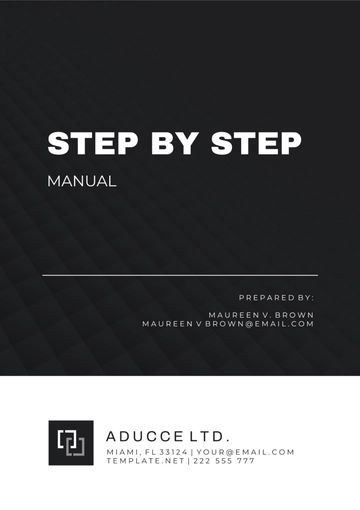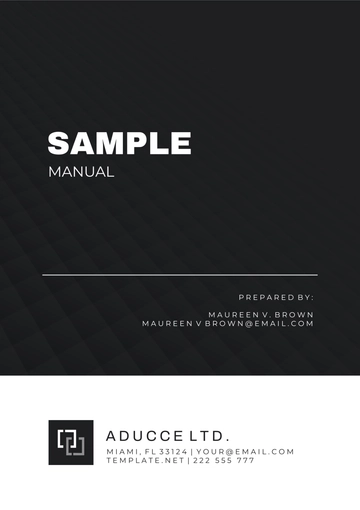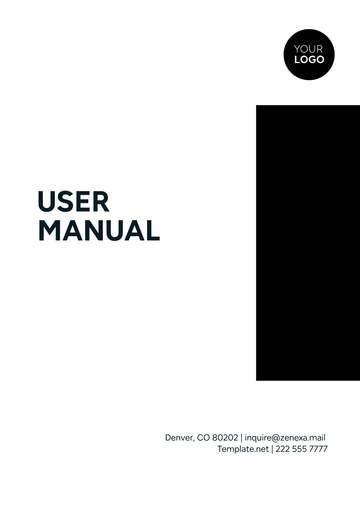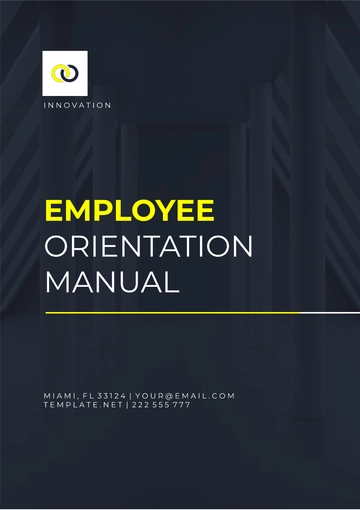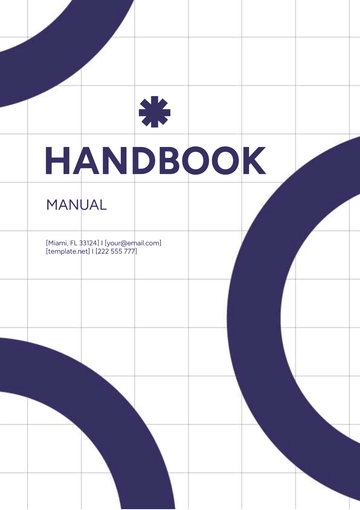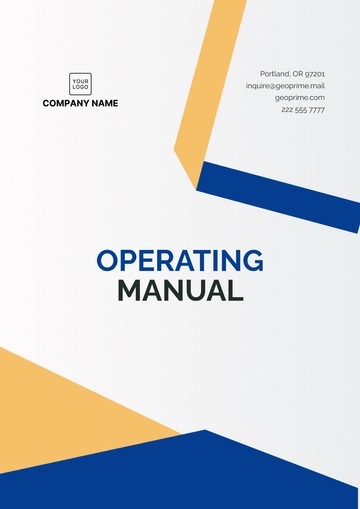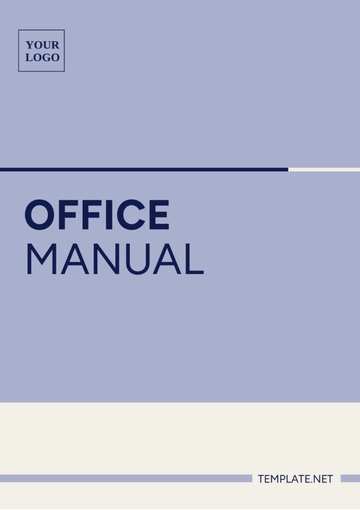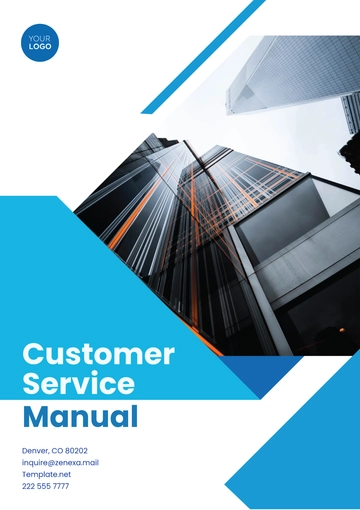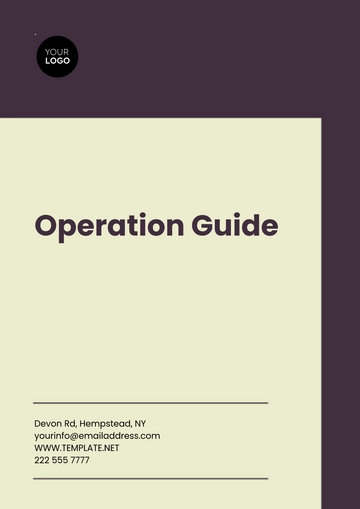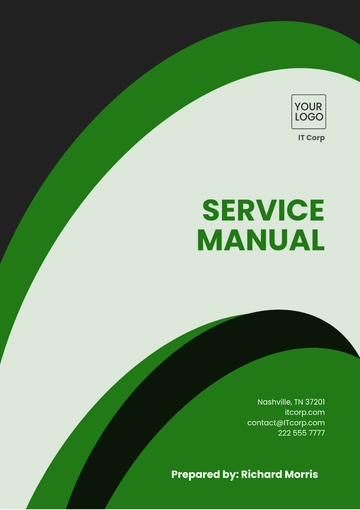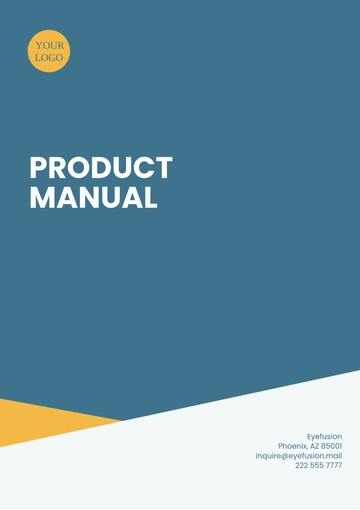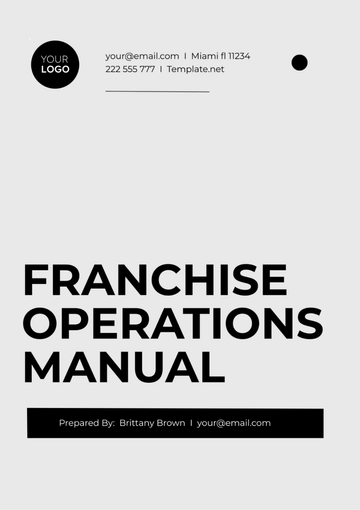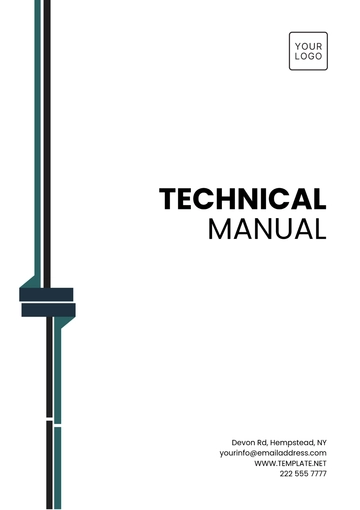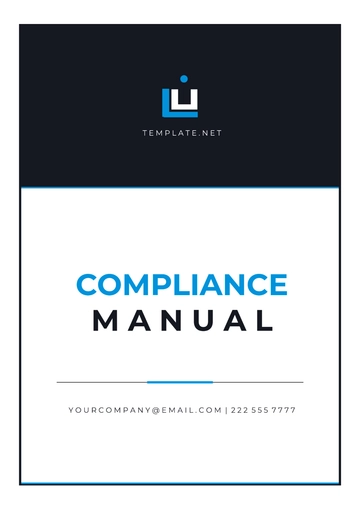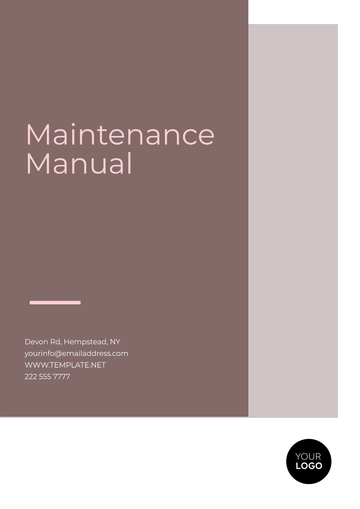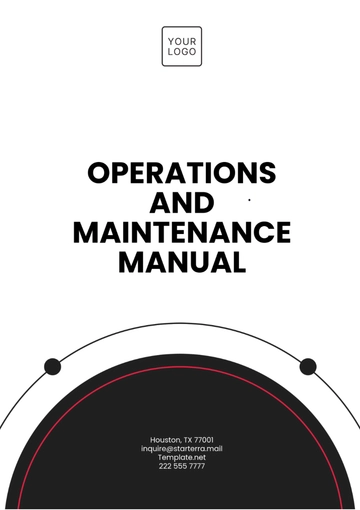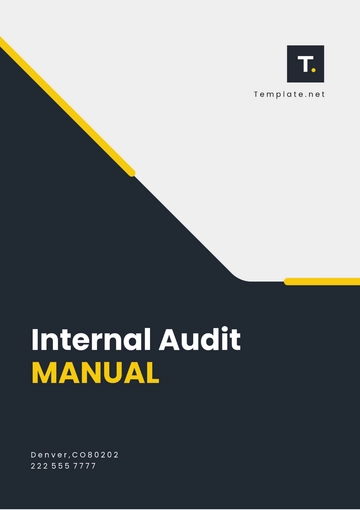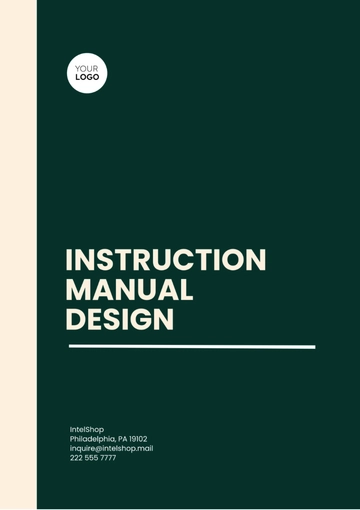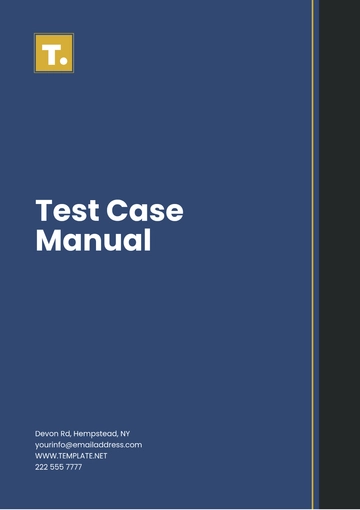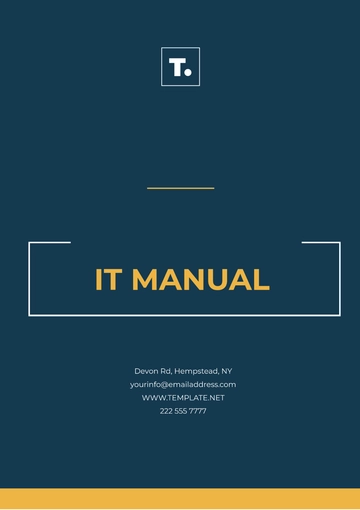Free Agriculture Supply Management Manual
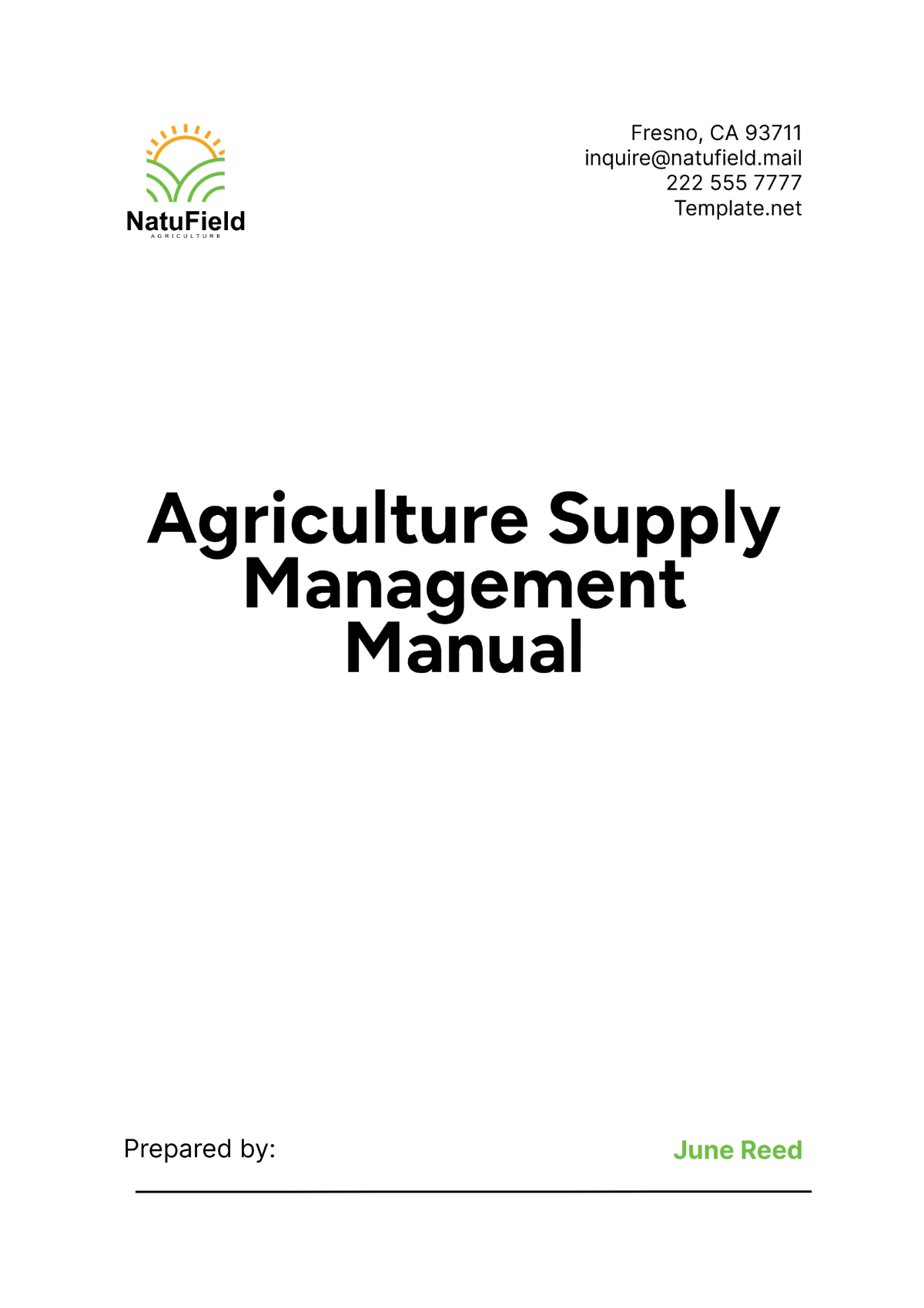
I. Introduction and Objectives
Welcome to the Agriculture Supply Management Manual for [Your Company Name]. This guide is designed to help you efficiently manage agricultural supplies while adhering to US regulations and best practices. Whether you're overseeing inventory, sourcing materials, or ensuring compliance, this manual provides the strategies and tools you need for effective supply management. Our goal is to help you maintain a smooth operation that supports the success and growth of [Your Company Name].
Objectives
Optimize Supply Chain Efficiency
Implement strategies to streamline the procurement, storage, and distribution of agricultural supplies to minimize delays and reduce costs for [Your Company Name].
Ensure Compliance with US Regulations
Follow legal standards and industry regulations for sourcing, handling, and storing agricultural products, including pesticide and fertilizer use, and safety practices for [Your Company Name].
Enhance Inventory Management
Develop and maintain robust inventory systems to track stock levels, forecast needs, and manage orders to prevent shortages and excess supplies at [Your Company Name].
II. Scope
This manual applies to all procedures related to the management of agricultural supplies within [Your Company Name], including sourcing, procurement, inventory management, and distribution. It encompasses activities performed by the procurement team, warehouse staff, and logistics personnel.
A. Procurement
Procurement involves sourcing high-quality agricultural products, negotiating favorable contracts, and ensuring that suppliers meet [Your Company Name]’s quality standards. Effective procurement ensures the best products for our operations and supports long-term supplier relationships.
Sourcing agricultural products
Negotiating contracts with suppliers
Ensuring supplier compliance with quality standards
B. Inventory Management
Inventory management focuses on maintaining optimal stock levels, implementing efficient tracking systems, and minimizing waste. Effective inventory management supports [Your Company Name]’s operations by ensuring that supplies are available when needed and are used efficiently.
Maintaining optimal inventory levels
Implementing inventory tracking systems
Reducing waste and spoilage
C. Distribution
Distribution involves planning and executing transportation logistics, monitoring distribution routes, and ensuring timely delivery. Effective distribution ensures that agricultural products reach customers efficiently and reliably, supporting [Your Company Name]’s service commitments.
Coordinating transportation logistics
Monitoring distribution routes and schedules
Ensuring timely delivery to customers
III. Responsibilities
Effective agricultural supply chain management at [Your Company Name] relies on the clear allocation of responsibilities among team members. Each role is designed to ensure that every aspect of the supply process—from procurement to distribution—is handled efficiently and in accordance with best practices. Understanding these roles and their associated duties is crucial for maintaining a smooth operation and achieving the company's goals. By clearly defining responsibilities, [Your Company Name] aims to streamline processes, ensure high standards, and support the team’s collective success.
Role | Responsibilities | Description |
|---|---|---|
Procurement Manager | Identify Reliable Suppliers | Find and evaluate potential suppliers to ensure they meet [Your Company Name]’s needs. |
Negotiate Favorable Terms | Develop and secure agreements that benefit [Your Company Name], covering price and delivery terms. | |
Warehouse Supervisor | Oversee Inventory Management | Manage daily inventory operations to maintain stock levels and ensure efficient storage. |
Implement Inventory Control Mechanisms | Establish and enforce processes for accurate inventory tracking and management. | |
Logistics Coordinator | Plan and Coordinate Transportation Routes | Design efficient transportation strategies for delivering products to and from [Your Company Name]. |
Ensure Timely Deliveries | Monitor delivery schedules and address any delays to ensure on-time product distribution. | |
Procurement Assistant | Support Procurement Manager | Assist with supplier research, contract documentation, and order processing tasks. |
Inventory Clerk | Track Inventory Levels | Monitor stock quantities, update records, and alert the Warehouse Supervisor to reorder needs. |
Assist in Stock Replenishment | Coordinate with the Procurement Manager to ensure timely replenishment of inventory. | |
Distribution Manager | Oversee Distribution Operations | Manage the distribution process, ensuring that all shipments are processed and dispatched efficiently. |
Coordinate with Logistics Coordinator | Work with the Logistics Coordinator to ensure distribution schedules are met and resources are used effectively. |
IV. Timeline
To ensure the successful implementation of the agricultural supply management processes at [Your Company Name], a clear and structured timeline is essential. This section outlines key milestones and target dates for achieving crucial steps in procurement, inventory management, and distribution setup. By following this timeline, [Your Company Name] can systematically address each phase of the supply chain management process, ensuring that each component is completed on schedule and to a high standard. This organized approach supports the efficient execution of tasks and helps meet the company’s operational goals.
Milestone | Target Date | Description |
|---|---|---|
Identify and Contract Suppliers | Month 1 | Complete the process of sourcing, evaluating, and negotiating contracts with reliable suppliers. |
Implement Inventory Management System | Month 2 | Establish an effective inventory management system to track and manage stock levels and movements. |
Set Up Distribution Channels | Month 3 | Develop and finalize transportation and distribution strategies to ensure efficient product delivery. |
V. Resource Allocation
Effective resource allocation is the backbone of a well-functioning agricultural supply chain at [Your Company Name]. Allocating resources efficiently ensures that all aspects of the supply management process, from procurement to distribution, are adequately supported. This section provides a clear overview of how to allocate financial, human, and material resources to meet operational needs and support strategic goals. By understanding and implementing these resource allocation strategies, [Your Company Name] can optimize operations, enhance productivity, and achieve its objectives in agricultural supply management.
Resource | Allocation Strategy | Details |
|---|---|---|
Financial | Budget Planning and Management | Allocate funds for procurement, inventory, and distribution activities, ensuring budget adherence. |
Human Resources | Staffing and Training | Recruit qualified personnel for procurement, inventory, and logistics roles; provide ongoing training. |
Material Resources | Supply Chain Management | Ensure adequate stock of supplies and equipment for procurement, warehousing, and transportation needs. |
Technological Resources | Implement and Maintain Systems | Invest in and maintain software for inventory management, procurement, and logistics operations. |
VI. Communication Plan
A robust communication plan is vital for the effective management of the agricultural supply chain at [Your Company Name]. Clear and consistent communication channels between teams ensure that every aspect of the supply process operates smoothly and efficiently. This plan outlines essential strategies for maintaining regular interactions, providing real-time updates, and gathering feedback. The communication plan includes:
Regular meetings between procurement, warehouse, and logistics teams
Real-time updates on inventory levels and distribution status
Feedback mechanisms for continuous improvement
VII. Risk Management
Effective risk management is essential for ensuring the stability and resilience of the agricultural supply chain at [Your Company Name]. By proactively identifying potential risks and implementing strategic mitigation measures, the company can safeguard against disruptions and maintain smooth operations. This section explores common risks such as supplier disruptions, inventory imbalances, and logistical delays, offering practical strategies to address these challenges. Common risks include:
Supplier disruptions
Inventory shortages or surpluses
Logistical delays
Mitigation strategies include diversifying suppliers, maintaining buffer stock, and optimizing transportation routes.
VIII. Quality Assurance/Control
Achieving and maintaining high-quality standards is essential for [Your Company Name] to ensure customer satisfaction and regulatory compliance. The Quality Assurance/Control section outlines the procedures and practices used to uphold these standards throughout the agricultural supply chain. This includes methods for inspecting products, measuring performance, and implementing continuous improvement strategies. By focusing on quality assurance, [Your Company Name] aims to deliver superior products, optimize operations, and foster long-term success in the agricultural industry.
A. Quality Inspection Procedures
Quality Inspection Procedures ensure that every stage of the supply chain adheres to [Your Company Name]’s quality standards. This involves:
Incoming Product Inspection: Verify raw materials meet quality standards upon receipt.
In-Process Quality Checks: Monitor production stages to ensure adherence to quality criteria.
Final Product Evaluation: Assess finished products for compliance with quality and regulatory standards.
B. Performance Metrics
Performance Metrics are used to evaluate the effectiveness of quality control processes at [Your Company Name]. These metrics help track:
Defect Rate: Measure the percentage of products failing to meet quality standards.
Customer Satisfaction: Assess feedback to gauge satisfaction with product quality and service.
Supplier Performance: Evaluate suppliers based on delivery punctuality, product quality, and responsiveness.
C. Continuous Improvement Initiatives
Continuous Improvement Initiatives focus on refining [Your Company Name]’s quality assurance practices. These initiatives involve:
Quality Improvement Programs: Implement strategies to enhance product and process quality.
Employee Training: Provide ongoing education on quality standards and procedures.
Feedback Implementation: Utilize insights from inspections and customer feedback to refine quality control processes.
IX. Monitoring and Evaluation
Continuous monitoring and evaluation are necessary to ensure the effectiveness of the supply management process. This involves:
Regular performance reviews
Tracking key performance indicators (KPIs)
Implementing corrective actions based on feedback
X. Stakeholder Engagement
Building and maintaining strong relationships with stakeholders is vital for the success of [Your Company Name]’s agricultural operations. Engaging with stakeholders—including suppliers, customers, employees, and community members—ensures that their needs and concerns are addressed while fostering trust and collaboration. Effective engagement involves regular communication, transparent processes, and active listening to feedback. By involving stakeholders in decision-making processes and providing clear updates on company activities, [Your Company Name] can align its goals with stakeholder expectations and promote a positive and productive environment.
Proactive stakeholder engagement also supports [Your Company Name] in identifying opportunities for growth and improvement. Through structured meetings, surveys, and feedback channels, the company can gather valuable insights into stakeholder perspectives and address potential issues before they escalate. This approach not only enhances operational efficiency but also strengthens relationships, leading to long-term success and sustainability. By prioritizing stakeholder engagement, [Your Company Name] demonstrates its commitment to mutual success and responsible business practices.
XI. Flexibility and Continuous Improvement
Maintaining flexibility and a focus on continuous improvement allows [Your Company Name] to adapt to changes and optimize supply chain operations. Essential practices include:
Regularly updating processes and procedures
Embracing technological advancements
Encouraging a culture of innovation within the team
The Agriculture Supply Management Manual serves as a comprehensive guide for ensuring the efficiency and effectiveness of [Your Company Name]’s supply chain operations. By adhering to these procedures and best practices, we aim to achieve high standards of quality, efficiency, and stakeholder satisfaction. Our commitment to these principles will drive our success and sustainability in the agricultural industry.
- 100% Customizable, free editor
- Access 1 Million+ Templates, photo’s & graphics
- Download or share as a template
- Click and replace photos, graphics, text, backgrounds
- Resize, crop, AI write & more
- Access advanced editor
Streamline your operations with the Agriculture Supply Management Manual Template from Template.net. Fully customizable and editable, this template is designed for efficient supply chain management. Easily editable in our Ai Editor Tool, it allows you to tailor every detail to fit your unique requirements, ensuring optimal performance and organization.
